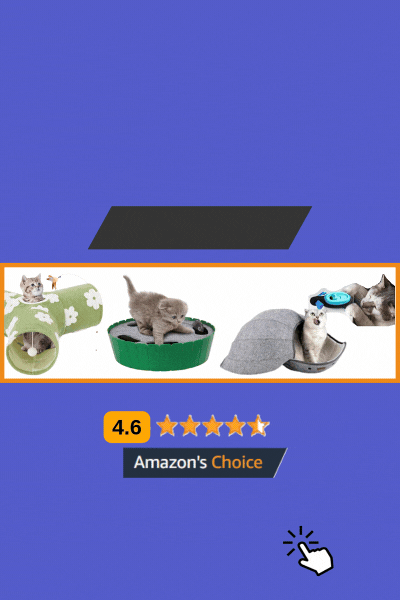Keeping a pet is a Herculean task.
You have to take care of everything and be mindful of everything.
Grooming forms an essential part of your dog’s health care.
Thus it is of utmost importance that you know everything.
From the type of brush to use to the kind of shampoo that’ll suit your pup, you need to know everything.
Thus we bring to you this well researched article covering the varied aspects of grooming.
1. Short Coats (e.g., Beagle, Boxer, Dalmatian):
Short-coated dogs may seem low-maintenance, but they still shed and collect dirt. Groom them once or twice a week using a soft-bristle brush or grooming mitt to remove loose hairs and boost skin circulation.
Bathing once every 4–6 weeks will help maintain a healthy shine. Pay special attention to any signs of dandruff or bald spots — these could indicate skin issues.
2. Medium Coats (e.g., Labrador Retriever, Corgi, Border Collie):
Medium-coated dogs typically require brushing 2–3 times a week. A slicker brush works well for removing tangles and loose hair, while an undercoat rake can help during shedding seasons. Bathing once every month is ideal unless they get extra dirty.
See Also:
3. Long Coats (e.g., Shih Tzu, Afghan Hound, Maltese):
Long-haired breeds need daily brushing to prevent painful mats and tangles. Use a pin brush to detangle and a comb to check for hidden knots, especially behind the ears, under the legs, and around the tail.
Regular trimming or professional grooming every 6–8 weeks is often necessary to manage their coat length.
4. Curly or Wavy Coats (e.g., Poodle, Bichon Frise, Portuguese Water Dog):
Curly coats require careful daily brushing to prevent mats, which can form quickly. A slicker brush combined with a metal comb is best. These breeds also typically need professional grooming every 4–6 weeks to maintain their coat shape and avoid painful tangles.
5. Double Coats (e.g., Siberian Husky, German Shepherd, Golden Retriever):
Dogs with thick undercoats shed heavily, especially during spring and fall. Use an undercoat rake and slicker brush several times a week during shedding seasons, and at least weekly otherwise.
Never shave a double-coated dog unless medically necessary, as their coat regulates temperature.
6. Wire Coats (e.g., Terrier Breeds like the Scottish Terrier or Westie):
Wire-haired dogs need hand-stripping or special tools to remove dead hairs and maintain coat texture. A stripping knife or a firm bristle brush is often used. Brush them 2–3 times a week and plan for professional stripping sessions every few months.
Essential Dog Grooming Tools:
1. Slicker Brush:
Ideal for removing tangles, mats, and loose hair from almost any coat type. The fine, short wires close together make it great for medium, long, and curly coats.
2. Bristle Brush:
Perfect for short-haired breeds. It smooths the coat, removes dirt, and distributes natural oils for a shiny finish.
3. Pin Brush:
Best for dogs with long, flowing coats. It looks similar to a human hairbrush and gently detangles without pulling too hard.
4. Undercoat Rake:
A must-have for double-coated breeds. It reaches deep into thick fur to pull out loose undercoat hair during heavy shedding periods.
5. Grooming Mitt or Glove:
Great for short-haired dogs. It’s worn like a glove, and as you pet your dog, it removes loose fur and dirt while giving them a gentle massage.
6. De-matting Comb:
Designed specifically to tackle severe mats and tangles without painful pulling. It usually has sharp blades that cut through tough knots safely.
7. Shedding Blade:
Helpful for dogs that shed heavily. It consists of a looped metal strip with serrated edges to remove loose hair quickly.
8. Stripping Knife:
Used for hand-stripping wire-coated dogs. It removes dead hair from the coat to maintain the wiry texture without damaging the skin.
9. Metal Comb:
Essential for checking behind the slicker brush to ensure all tangles are removed. It’s particularly important for long-haired and curly breeds.
Key Things Dog Owners Must Remember When Grooming
1. Be Gentle: Brushing too hard can irritate or damage your dog’s skin. Always use a light, careful touch, especially when working through tangles.
2. Stay Consistent: Regular grooming sessions (even just a few minutes a day) prevent mats, control shedding, and make your dog more comfortable with handling over time.
3. Check the Whole Body: Don’t just brush the back! Make sure you groom under the arms, behind the ears, the belly, and around the tail — these areas often hide hidden mats and debris.
4. Watch for Skin Issues: While grooming, check for any signs of redness, lumps, bald patches, scabs, or fleas. Early detection can prevent bigger health problems.
5. Reward and Praise: Make grooming a positive experience. Offer treats, soothing words, and breaks if your dog seems stressed. Grooming should feel like a bonding moment, not a chore.
6. Use the Right Tools for the Coat: Using the wrong brush can either do nothing or hurt your dog. Matching the tool to the coat type is essential for effective, pain-free grooming.
7. Introduce Tools Slowly: If your dog is new to grooming, let them sniff and investigate brushes and tools before you use them. Gradual introduction helps them feel more relaxed.
Proper grooming isn’t just about giving the doggos a bath every week.
It is making sure that physically they are free of everything that might be responsible for causing any kind of discomfort.
Thus, grooming is an essential part of keeping a pet hearty and healthy.
We hope you find this article informative.

Nikita Rout is a passionate content writer at HowItSee.com, where she explores the wonders of animals, nature, and the curious questions that spark our imagination. With a love for research and a knack for simplifying complex topics, she brings clarity and creativity to every article she writes. When she’s not writing, you’ll likely find her reading about animal behavior or coming up with unique pet name ideas.

